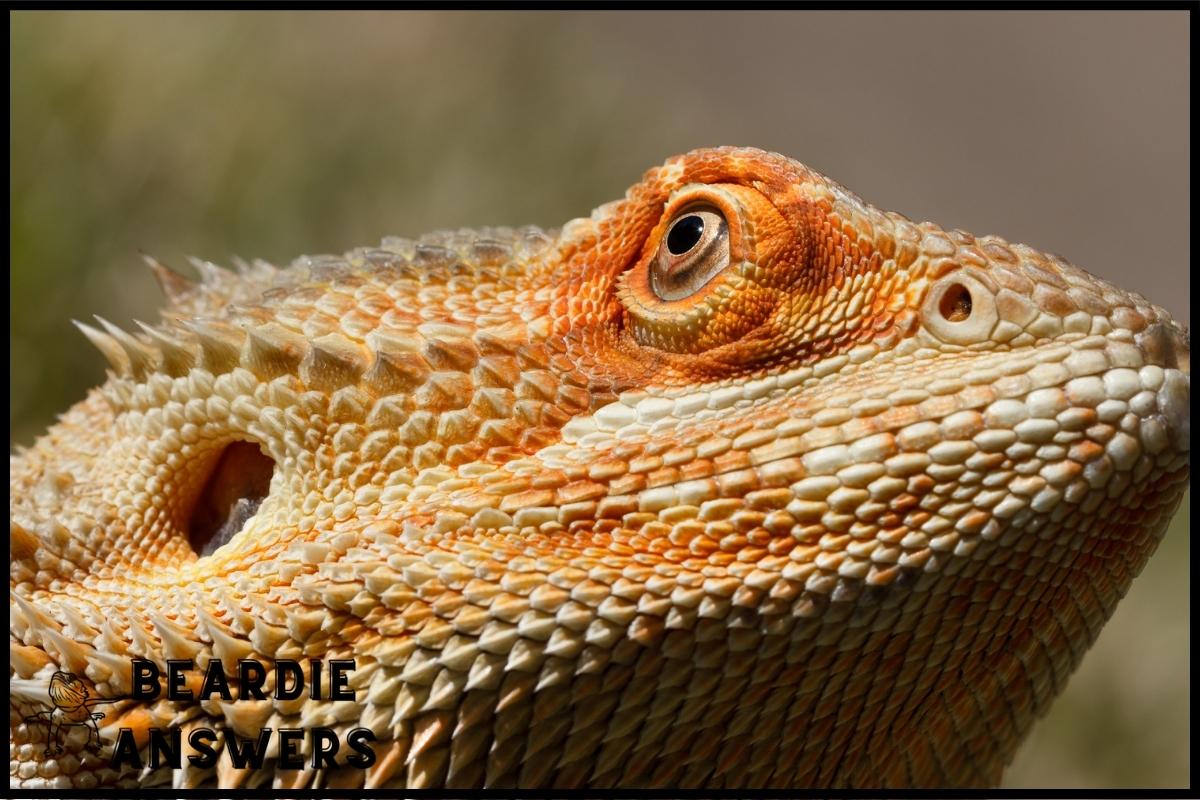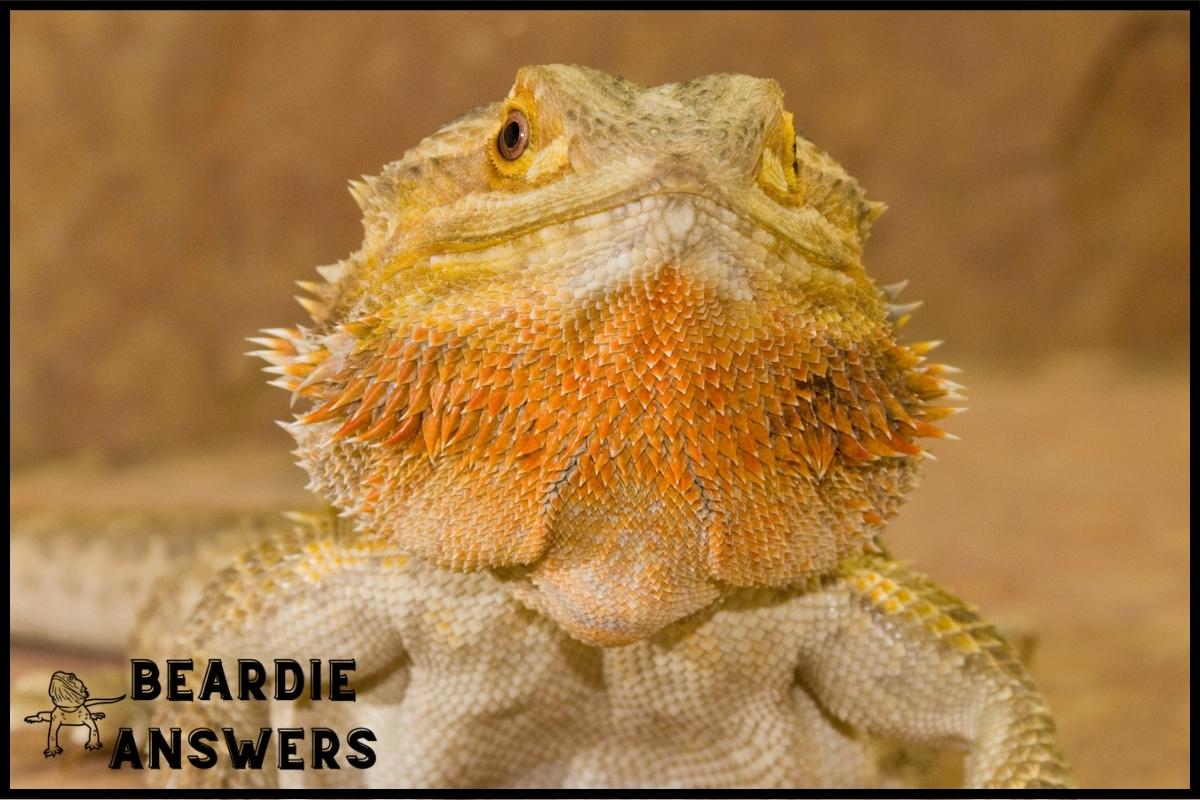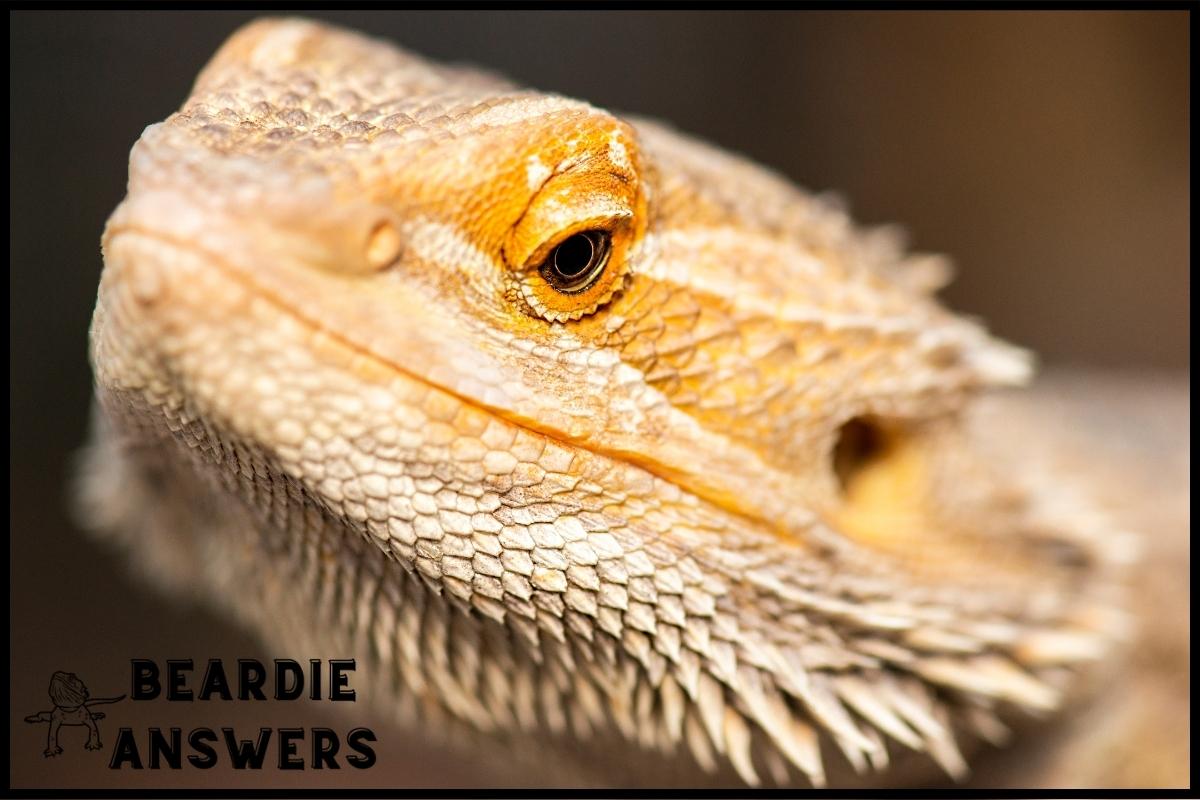Are you thinking about getting a bearded dragon? Before you do, you should know what kind of care and attention your pet requires. To assist you, we’ve compiled a list of things you should absolutely NOT do with your beardie.
Handling Mistakes
[su_box title=”What You’ll Learn” box_color=”#5a5a5a”]
- Handling your bearded dragon by its tail can result in injury or pain.
- Avoid oversqueezing or holding your bearded dragon to tight, as this can cause injury or distress.
- Extreme temperatures should be avoided as they can cause stress and discomfort in your bearded dragon.
[/su_box]
Avoid Handling by Tail
Bearded dragon spines and tails are delicate and easily damaged if handled incorrectly. As a result, avoid handling them by the tail, which can result in pain and discomfort.
Always slide your hand under your bearded dragon and use the other hand to gently support their body when picking them up. This will help the dragon feel safe and secure, while also avoiding any potential injuries or tail damage.
Avoid Squeezing or Holding Too Tightly
When handling your bearded dragon, avoid squeezing or gripping them too tightly. Do not grasp the bearded dragon too tightly if it begins to fidget or tries to escape. It’s best to keep your grip loose, and if the dragon wants to flee, let it.
Holding a bearded dragon too tightly can cause stress and even harm if done for an extended period of time. Picking up a bearded dragon should also be done from the front or side, never directly from above. This keeps the dragon from making dangerous jumps that they might not be able to land safely from.
Avoid Exposing to Extreme Temperatures
Prolonged exposure to extreme hot or cold temperatures can be hazardous to your pet. Bearded dragons prefer temperatures ranging from 75 to 90 degrees Fahrenheit, with a basking spot between 95 and 100 degrees Fahrenheit.
They may become stressed or even suffer from heatstroke if the temperatures in their enclosure become too high. Make sure you regularly monitor and adjust the temperature of their enclosure. You should also avoid exposing the enclosure to direct sunlight for extended periods of time, as this can cause the temperature to skyrocket.
Keep temperature in mind when handling your bearded dragon. For example, if it’s snowing outside and you want to take your bearded dragon out, you may want to think twice.
Feeding Mistakes
[su_box title=”What You’ll Learn” box_color=”#5a5a5a”]
- Ensure that the food you feed your beardie is not toxic and to avoid overfeeding.
- When feeding live prey, make sure the prey is the appropriate size, as feeding too large prey can be dangerous.
- Avoid giving them pinkie or young “fuzzy” mice too frequently; this should only be done as a treat.
[/su_box]
Avoid Feeding Toxic Foods
For obvious reasons, you’ll want to avoid feeding potentially toxic foods to your bearded dragon. Onions, chives, nuts, and certain types of lettuce are all considered unhealthy and should be avoided.
Avoid Over-Feeding
Overfeeding can result in a variety of health problems, including bloating, lethargy, indigestion, constipation, and even spinal nerve problems.
If you have a baby bearded dragon, they may overeat if left unsupervised, so keep an eye on their food intake. Baby dragons typically require 50-100 crickets per day.
It’s fine if they stop eating before then – they’re just full! After that, make sure to remove any uneaten insects from the enclosure.
Avoid Feeding Live Prey That Is Too Large
The size of the live prey should be appropriate for the size of your bearded dragon. Always keep an eye on your dragon while they are eating and remove any uneaten insects from their environment. Keep an eye on the size of the food you feed them, as anything wider than the space between their eyes can be dangerous.
Housing Mistakes
[su_box title=”What You’ll Learn” box_color=”#5a5a5a”]
- Avoid using hazardous materials in the enclosure, such as chemically treated wood, plastic, or anything else that could be harmful to your pet.
- Avoid placing the enclosure in direct sunlight for extended periods of time to avoid overheating.
- Overcrowding the enclosure can cause stress and other health problems for your bearded dragon.
[/su_box]
Avoid Using Hazardous Materials in the Enclosure
Reptiles can be poisoned by cedar wood shavings, sand, gravel, corn cob material, walnut shells, and other loose materials. Young bearded dragons should not be left on these types of substrates and should instead be placed on newspapers, paper towels, or commercial reptile carpets. This will not only keep your pet healthy and safe, but it will also provide a safe surface for them to play on.
Avoid Placing the Enclosure in Direct Sunlight for Extended Periods of Time
Avoid exposing your bearded dragon’s enclosure to direct sunlight for extended periods of time. Too much sun is just as bad as not enough. Make sure it gets some direct sunlight while also having a place for shade.
The ideal environment should provide bright light while not being too hot or humid, so look for a location that provides both shade and sun. Beardies enjoy basking under a heat lamp or in direct sunlight on a daily basis, so make sure to allow them to do so without overexposing them to the sun’s rays.
Avoid Overcrowding the Enclosure
Overcrowding can cause stress and aggression in your pet, which can have serious health consequences. Make sure your dragon has enough space to move around, including hiding spots and basking areas, and that the enclosure is not too small. Avoid housing two baby bearded dragons together because they can become territorial and aggressive in an overcrowded environment.
Healthcare Mistakes
[su_box title=”What You’ll Learn” box_color=”#5a5a5a”]
- Self-diagnosis and self-treatment should be avoided.
- Neglecting signs of illness can be harmful to your reptile’s health.
- Keep an eye out for changes in behavior or appetite, and consult a veterinarian if any health issues arise.
[/su_box]
Avoid Self-Diagnosis and Self-Treatment
When it comes to caring for your bearded dragon, self-diagnosis and self-treatment are never a good idea. Even if you’ve done a lot of research, it’s still a good idea to take your pet to a veterinarian who specializes in exotic reptiles if there are any health issues.
Veterinarians are trained in the identification and treatment of illnesses, and they are the only ones who can correctly diagnose and treat your bearded dragon.
Attempting to treat your pet without professional assistance can result in more serious health problems in the future.
Avoid Neglecting Signs of Illness
Never ignore signs of illness, no matter how small they may seem. When evaluating any signs of illness, look for skin changes such as bumps, lesions, sores, discoloration, and a yellow or black beard.
Sluggishness, closed eyes, hind leg paralysis, prolonged mouth gaping, and a black beard with no outer trigger are all symptoms of illness. They may also lose teeth or develop gum disease if they are neglected.
[su_box title=”Things to Remember” box_color=”#5a5a5a”]
- Avoid holding a bearded dragon by the tail and avoid squeezing or holding it too tightly, as this can cause injury or distress.
- Bearded dragons should not be subjected to extreme temperatures.
- Avoid feeding toxic foods to bearded dragons, such as onions, chives, nuts, and some lettuce, and do not overfeed them.
- When feeding live prey, ensure that the size is appropriate and not excessive.
- In terms of housing, avoid using hazardous materials in the enclosure and avoid overcrowding or exposing it to direct sunlight for long periods of time.
[/su_box]

Hi! My name is Bryan, I am the “one behind the words” here are BeardieAnswers.com. I believe that providing quality care and nutrition is the best way to ensure the health of your pet. Every beardie is special and deserves the best care and attention. If you have questions about your bearded dragon, please don’t hesitate to ask! View My Full Author Page




